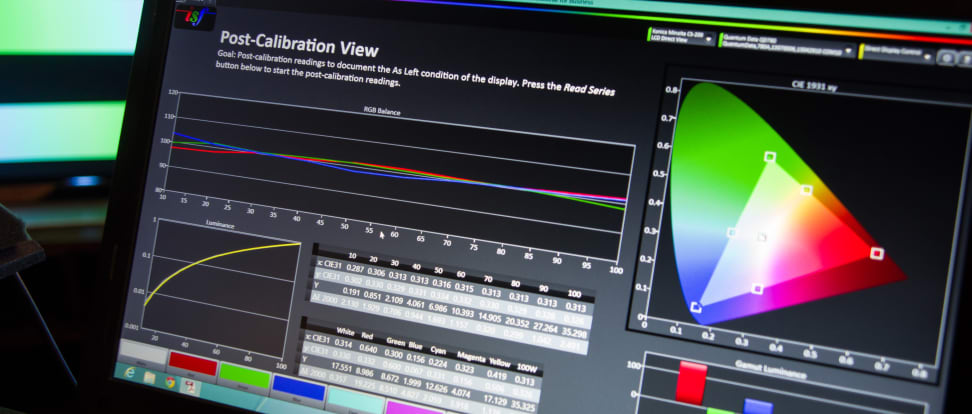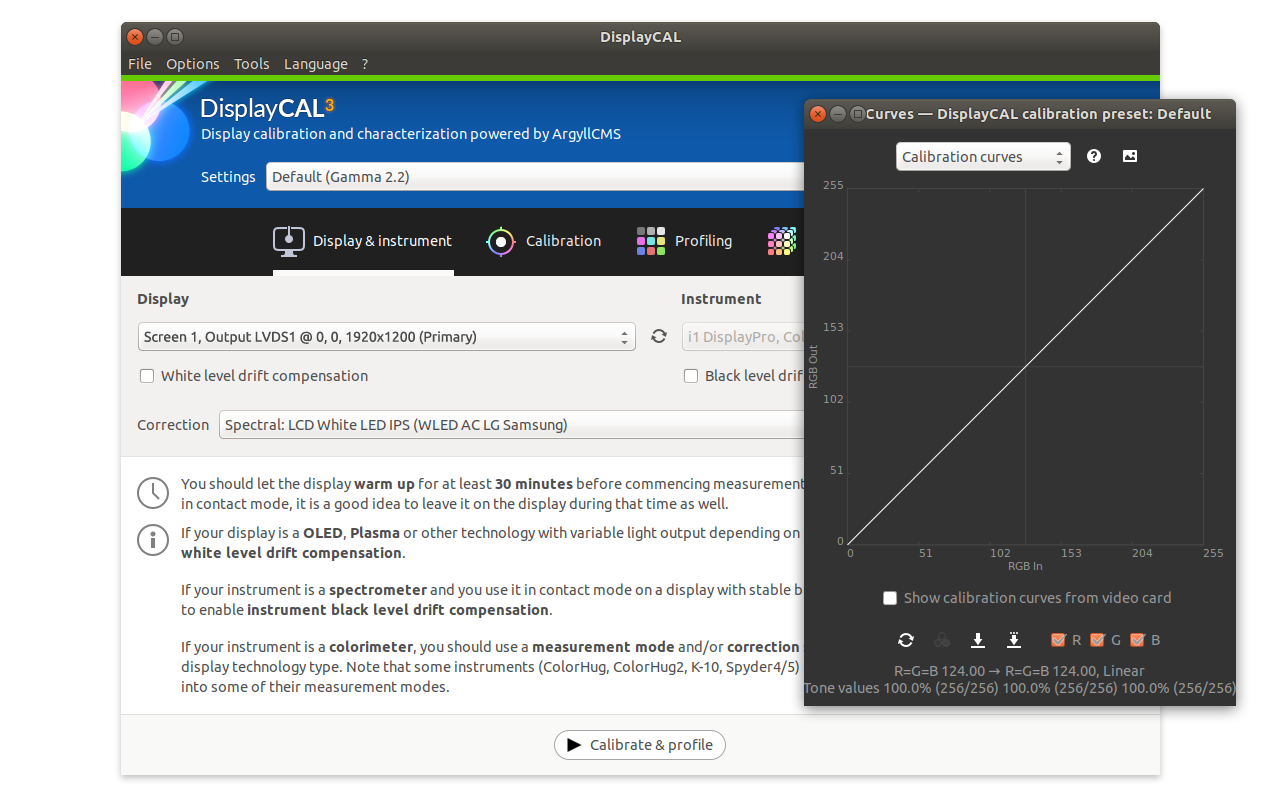Mar 01, 2021 Video and audio calibration software aims to improve the quality of video reproduction. Adobe's app is a great video calibration tool for both professionals and amateurs. You'll find below an HDTV calibration solution, that features special suites for setting up, calibrating, and adjusting as well. Spyder4TV HD measures the current settings on your TV and provides adjustments for ideal viewing levels using the calibration wizard Spyder4TV software. Simply install the software and place the device on your TV screen with the help of the SpyderWeb attachment. Essentially, after setting the contrast and brightness values, I have to calibrate the color level to enter equal values of the colors that make up the entir. Dec 24, 2019 The first step in your calibration process is to make sure your TV is set for in-home use and not store demonstration mode. Sanity check aside, if you’d like to milk those last couple percent of.
The calibration of UHDTVs, specifically those with HDR and WCG (High Dynamic Range and Wide Colour Gamut) capability, is presently what is know as a 'Crap Shoot'... For the real videophile there is presently no truly accurate way to calibrate a UHD/HDR/WCG TV, although we are working with various manufacturers to change this situation.
Most 'professional' UHD/HDR/WCG grading displays can be calibrated, as they have internal 3D LUT calibration, and are integrated with LightSpace. Such displays include the Dolby PRM series, and the Canon HDR displays.
The following outlines the present calibration possibilities for both consumer UHD/HDR/WCG TVs, as well as professional monitors.
UHDTV
UHDTV (Ultra High Definition TV) has had something of a difficult birth, with different display manufacturers effectively defining their own 'Ultra HD' specifications, based loosely around a set of common specifications.
Having said that. there is nothing to stop a standard gamut display (Rec709), with standard HD or even SD resolution, working with HDR dynamic range for example. A number of professional HDR grading displays are actually HD resolution, not UHD.
The HDR 'standards', such as they exist, are aimed more at consumer viewing, including BluRay playes, as well as HDR TVs.
For the sake of simplicity within this guide, we will assume that UHDTV means UHD 4K resolution, ST2084 HDR gamma (EOTF), and WCG Rec2020 colour gamut, using HDR10, HDR10+, and Dolby Vision. HLG and Philips HDR will be discussed when relevant (when TVs with HLG/Philips HDR are available, and sources mastered in those standards are available).
HDR UHDTV (Home TV) User Calibration
Tv Calibration Software Free
User calibration of home UHDTVs (PQ based HDR and WCG as defined above) is actually something of an oxymoron...
Tv Calibration Software Download
For most videophiles, home cinema calibration means taking control of all aspects of the display's image path, enabling precise control to be attained over all the display's colourimetry. Often, this means using 3D LUT based calibration, as this is the pinnacle of all calibration techniques.

With non-HDR UHDTVs (SDR Rec709 TVs), external LUT boxes, such as the Lumagen Radiance, as well as the software based madVR playback system, can be use to very accurately calibrate connected displays.
Direct internal 3D LUT based calibration of home TVs is not an option as few TV manufacturers offer in-built 3D LUT capability... This lack of in-built 3D LUT capability also extends to new HDR UHDTVs.
However, the issue with HDR UHDTVs at the moment is there are few viable ways to calibrate them with 3D LUTs, as even though LUT boxes, such as the Lumagen Radiance Pro, can work with UHD/HDR/WCG images, most HDR UHDTVs have their factory EOTF presets fixed, and cannot have them disabled, while still maintaining HDR compatibility. This makes secondary calibration impossible at the moment.
We are working on this situation with various TV manufacturers and hardware manufacturers, and hope to have better calibration approaches for home TVs in the near future, including 3D LUT based HDR calibration.
COMPLAIN TO YOUR HDR TV SET MANUFACTURER AND DEMAND THEY ADDRESS THESE ISSUES!
Light Illusion will be delighted to assist any additional TV manufacturers that wish to address correct UHD/HDR/WCG calibration.


Manual HDR UHDTV Calibration - Overview
For home HDR UHDTVs, the lack of viable 3D LUT calibration capability leaves us with Manual Calibration...
The problem with manual display calibration is that few displays (including traditional SDR Rec709 displays) are designed to calibrate accurately through the use of the display's available manual controls. This can be due to poor internal image processing electronics, with poor colour decoupling (RGB cross-colour contamination) for example, which causes the controls to not work as expected, or due to simple poor implementation of the display's CMS (Colour Management System).
This is why true videophiles use 3D LUT boxes for SDR Rec709 display calibration accuracy, as this negates all the display's internal design issues, and produced the best possible final calibration.

And HDR UHDTVs are no exception. They suffer the same issues and limitations with respect to accurate manual calibration.
So, as there are no viable ways to calibrate home HDR UHDTVs via 3D LUTs, we are limited by the level of accuracy in-built into the display by the manufacturer. But, what exactly does this mean for HDR UHDTV calibration?
(As mentioned above, the issue is that at the present time there are no home HDR TVs with 3D LUT calibration capabilities, and most do not allow for their in-built EOTF to be disabled, making external 3D LUT Box calibration unusable...)

With non-HDR/UHD TVs (SDR Rec709 TVs) calibration is based on matching the TV as closely as possible to a given standard, such as Rec709 with a power law or BT1886 gamma. With HDR UHDTVs there is a further issue as the target WCG (Wide Colour Gamut) colour space is Rec2020, which no TV can attain. This means the TV cannot be calibrated directly to the standard, as only a small part of the Rec2020 gamut will be covered by the display. Additionally, the ST2084 HDR Gamma (EOTF - Electro Optical Transfer Function) is not 'relative', as it is a nits based 'absolute' standard, based on a 10000 nit maximum luminance standard. This means different displays with different peak luminance levels will use a different 'portion' of the full ST2084 EOTF, with different Tone Mapping roll-off.
The result is this is less about calibration standards, and more about the process the display manufacturer enables any user to adopt for manual calibration. There is really no 'calibration' being performed, as the process used just verifies display setting, such as maximum luminance, black/white points of the display, the grey scale, and peak RGB gamut values, and then hopes the display's own processing will correctly place the volumetric colours where they should be within the target colour space.
This is the basic reality of HDR UHDTV calibration.
HDR10, Dolby Vision, and HLG
At the moment there are three competing HDR standards - HDR10 (and HDR10+), Dolby Vision, and HLG (Hybrid Log-Gamma).
Dolby Vision is a proprietary format, and requires all elements in the image chain to be Dolby licensed, providing a relative guarantee of final image display.
HRD10 and HDR10+ are open standards, so lack the relative guarantee of image playback, with each display manufacturer defining their own internal HDR processing.
Note: the underlying calibration of HDR10, HDR10+, and Dolby Vision is identical, as all use the same target colour space PQ EOTF and Rec2020 Gamut - the same calibration 'should' work for all standards.
HLG is as yet not widely deployed, but is slowly gaining use, and is simpler to calibrate as it uses a similar approach to SDR calibration, including the ability to easily use external LUT boxes for 3D based calibration.